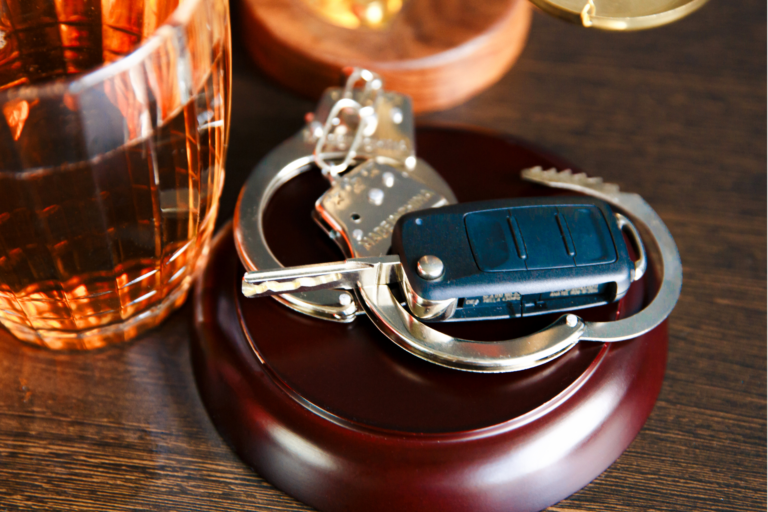Are Breathalyzers accurate?
When you blow into the chamber, it may give the officer a firm-looking data point, but that Breathalyzer reading isn\’t set in stone. Breathalyzers fail, just like any device.
As breath testing machines have gained prominence in law enforcement, so has the idea that a positive test means proof of guilt. It\’s simply a piece of evidence and, depending how it was gathered, it may or may not be admissible.
How a Breathalyzer works
A breath tester is a machine that measures alcohol on the breath while giving a reading of blood alcohol content (BAC). It uses a conversion formula to determine how much you\’ve had to drink. The science is well established but it\’s how the test is administered that makes the difference between a correct reading and a false positive. The California BAC limit for driving is .08.
Officer administration
As a machine, Breathalyzers are subject to electrical errors, improper technique or contamination. Regular maintenance requires regular calibration by lab technicians. Furthermore, readings can be inaccurate due to \”mouth alcohol.\” Alcohol leaves the mouth 15 minutes after drinking, but mouthwash and certain foods can interfere with readings. A burp or vomiting will also compromise accuracy because it affects this measurement.
Health aberrations
Human bodies come in all shapes, sizes and health conditions. A diabetic will have different acetone levels and may be victim of a false positive. There is a growing diabetes epidemic in the country and many with the disease are undiagnosed, meaning many will be mischarged as a result. Low carb diets like the Atkins Diet can have similar effects on acetone levels.
Breath patterns, use of an inhaler, smoking, and the consumption of sugar alcohols (often found in gum) can disrupt a reading and cause additional inaccuracies. While a Breathalyzer is a useful tool, it doesn\’t account for unique individuals.
Questionable results
In converting breath alcohol to a BAC reading, the Breathalyzer presumes that the conversion ratio from breath to blood is the same for all humans, regardless of body type and health condition. California\’s state courts will not hear arguments on the science of the tests but, as machines, they are subject to their handler\’s use.
Numerous police departments have been found using faulty equipment that wasn\’t properly stored or maintained, leading to case dismissals and retrials. A key issue is the application of the breath test itself.
As noted, an officer needs to observe the driver for 15 minutes prior to a test. Something as slight as a burp can disrupt the results. If you were cited for a DUI but the officer was not closely watching you during that time, the entire test may be bunk.
Solving the problem doesn\’t mean improper conviction
Drunk driving is a true problem in society and a threat to innocent drivers and passengers. However, the Breathalyzer alone is not proof of guilt. Officers use Breathalyzers in combination with field sobriety tests to gather evidence of impairment. As with any crime, the proof must be indisputable and properly gathered: guilty beyond reasonable doubt.
When administered free of contaminants and properly maintained, a Breathalyzer test can read the intoxication level of an average driver correctly. However, few things in life are this interchangeable and absolute. To prove guilt, the court needs to confirm the variables.




This online store offers a wide selection of decorative clock designs for all styles.
You can browse minimalist and vintage styles to complement your apartment.
Each piece is hand-picked for its aesthetic value and reliable performance.
Whether you’re decorating a stylish living room, there’s always a beautiful clock waiting for you.
antique pocket watch wall clocks
The collection is regularly refreshed with exclusive releases.
We focus on a smooth experience, so your order is always in professional processing.
Start your journey to timeless elegance with just a few clicks.
Our service lets you get in touch with specialists for occasional risky missions.
You can securely arrange assistance for specialized situations.
All listed individuals have expertise in executing sensitive operations.
assassin for hire
Our platform provides private interactions between clients and contractors.
If you require fast support, this platform is here for you.
List your task and find a fit with an expert in minutes!
Questo sito consente il reclutamento di professionisti per incarichi rischiosi.
Gli interessati possono trovare candidati qualificati per incarichi occasionali.
Gli operatori proposti vengono scelti con severi controlli.
assumere un killer
Con il nostro aiuto è possibile visualizzare profili prima di assumere.
La qualità è al centro del nostro servizio.
Contattateci oggi stesso per portare a termine il vostro progetto!
Searching for a person to take on a one-time dangerous task?
This platform specializes in linking customers with workers who are willing to execute critical jobs.
If you’re handling emergency repairs, hazardous cleanups, or complex installations, you’re at the perfect place.
All available professional is pre-screened and qualified to guarantee your safety.
order a killer
We offer clear pricing, detailed profiles, and secure payment methods.
No matter how challenging the situation, our network has the expertise to get it done.
Start your search today and locate the perfect candidate for your needs.
Welcome to our platform, where you can access special content designed specifically for adults.
All the resources available here is suitable only for individuals who are of legal age.
Ensure that you are eligible before continuing.
housewife
Explore a unique selection of adult-only materials, and immerse yourself today!
On this site, access interactive video sessions.
Interested in engaging dialogues career-focused talks, you’ll find options for any preference.
Live communication module is designed to foster interaction globally.
Featuring HD streams along with sharp sound, every conversation becomes engaging.
You can join public rooms connect individually, according to what suits you best.
https://zazacams.com/
What’s required a reliable network plus any compatible tool begin chatting.
This flight-themed slot combines exploration with exciting rewards.
Jump into the cockpit and try your luck through cloudy adventures for massive payouts.
With its retro-inspired graphics, the game evokes the spirit of early aviation.
https://www.linkedin.com/posts/robin-kh-150138202_aviator-game-download-activity-7295792143506321408-81HD/
Watch as the plane takes off – claim before it flies away to grab your rewards.
Featuring seamless gameplay and immersive sound effects, it’s a must-try for casual players.
Whether you’re chasing wins, Aviator delivers uninterrupted action with every round.
Aviator blends air travel with big wins.
Jump into the cockpit and spin through aerial challenges for sky-high prizes.
With its retro-inspired design, the game captures the spirit of aircraft legends.
https://www.linkedin.com/posts/robin-kh-150138202_aviator-game-download-activity-7295792143506321408-81HD/
Watch as the plane takes off – withdraw before it vanishes to lock in your rewards.
Featuring smooth gameplay and realistic background music, it’s a favorite for slot enthusiasts.
Whether you’re chasing wins, Aviator delivers uninterrupted thrills with every spin.
Модные образы для торжеств 2025 года вдохновляют дизайнеров.
Популярны пышные модели до колен из полупрозрачных тканей.
Блестящие ткани придают образу роскоши.
Асимметричные силуэты становятся хитами сезона.
Разрезы на юбках придают пикантности образу.
Ищите вдохновение в новых коллекциях — оригинальность и комфорт оставят в памяти гостей!
https://naphopibun.go.th/forum/suggestion-box/931050-u-lini-sv-d-bni-pl-ija-e-g-g-d-s-v-i-p-vib-ru
Здесь доступен уникальный бот “Глаз Бога” , который получает данные о любом человеке из проверенных платформ.
Платформа позволяет пробить данные по номеру телефона , формируя отчет из государственных баз .
https://glazboga.net/
Discover detailed information about the Audemars Piguet Royal Oak Offshore 15710ST on this site , including market values ranging from $34,566 to $36,200 for stainless steel models.
The 42mm timepiece features a robust design with selfwinding caliber and durability , crafted in rose gold .
Pre-Owned AP Royal Oak Offshore Diver 15710st watch
Analyze secondary market data , where limited editions reach up to $750,000 , alongside vintage models from the 1970s.
View real-time updates on availability, specifications, and historical value, with trend reports for informed decisions.
Explore the iconic Patek Philippe Nautilus, a horological masterpiece that merges sporty elegance with refined artistry.
Launched in 1976 , this legendary watch revolutionized high-end sports watches, featuring distinctive octagonal bezels and textured sunburst faces.
From stainless steel models like the 5990/1A-011 with a 55-hour energy retention to luxurious white gold editions such as the 5811/1G-001 with a blue gradient dial , the Nautilus caters to both avid enthusiasts and casual admirers.
New Philippe Nautilus 5980 prices
The diamond-set 5719 elevate the design with gemstone accents, adding unparalleled luxury to the timeless profile.
According to recent indices like the 5726/1A-014 at ~$106,000, the Nautilus remains a prized asset in the world of premium watchmaking.
For those pursuing a vintage piece or contemporary iteration , the Nautilus embodies Patek Philippe’s legacy of excellence .
Хотите найти информацию о человеке ? Этот бот поможет полный профиль в режиме реального времени .
Используйте продвинутые инструменты для поиска публичных записей в открытых источниках.
Выясните контактные данные или активность через автоматизированный скан с верификацией результатов.
глаз бога телеграмм
Бот работает в рамках закона , используя только открытые данные .
Получите расширенный отчет с геолокационными метками и графиками активности .
Доверьтесь проверенному решению для исследований — точность гарантирована!
Хотите найти данные о пользователе? Наш сервис предоставит полный профиль мгновенно.
Используйте уникальные алгоритмы для поиска публичных записей в соцсетях .
Выясните контактные данные или активность через систему мониторинга с гарантией точности .
глаз бога сайт
Система функционирует с соблюдением GDPR, обрабатывая открытые данные .
Получите расширенный отчет с геолокационными метками и графиками активности .
Доверьтесь надежному помощнику для digital-расследований — точность гарантирована!
Хотите найти данные о пользователе? Этот бот поможет полный профиль мгновенно.
Воспользуйтесь продвинутые инструменты для поиска публичных записей в соцсетях .
Узнайте контактные данные или интересы через автоматизированный скан с верификацией результатов.
пробить через глаз бога
Бот работает в рамках закона , обрабатывая общедоступную информацию.
Получите расширенный отчет с геолокационными метками и списком связей.
Доверьтесь проверенному решению для исследований — результаты вас удивят !